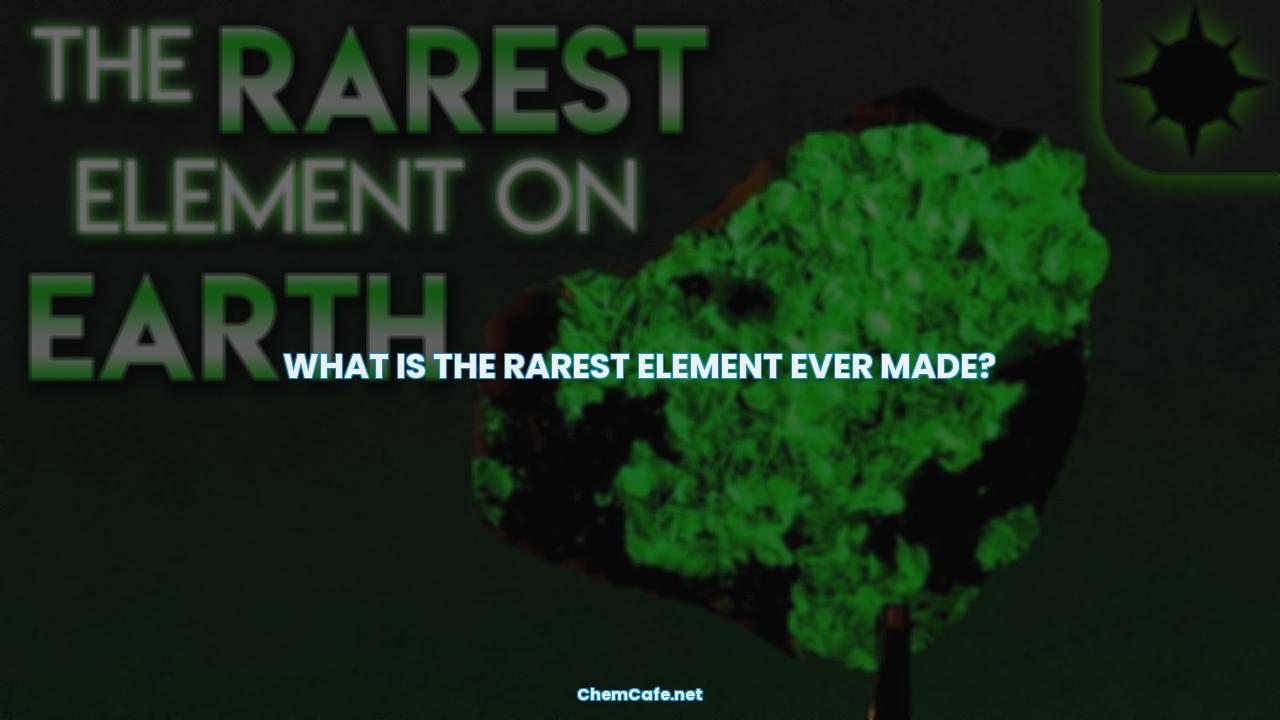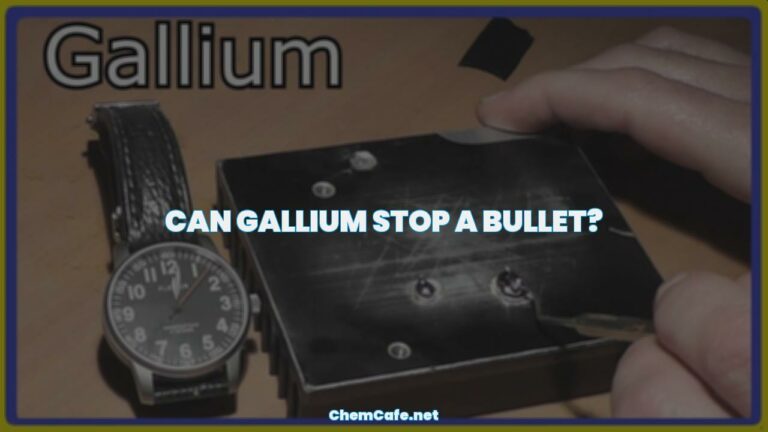Have you ever wondered what the rarest element ever made is? Many people have, and the answer may surprise you. Oganesson, atomic number 118 and atomic weight 294, is the rarest element ever made. With only a few milligrams ever produced as a byproduct in nuclear reactors, and just over one gram ever produced in the United States since its discovery, it is no wonder why this mysterious element is so sought after.
But what is so special about Oganesson? It is unknown what the element’s chemical properties are, but it is thought to be a metallic-looking and reactive solid. Unfortunately, for all its rarity, Oganesson has no practical uses outside of scientific research. This is why tiny productions are sometimes necessary when it comes to making new discoveries, especially when they involve rare elements like Oganesson.
When it comes to rare elements, Francium is the rarest metal found on Earth. Discovered in 1939 by Marguerite Perey at the Curie Institute in Parsis, it marks the end of mankind’s discoveries of naturally occurring elements. Not far behind is Xenon, the rarest gas found on Earth. Both of these elements are highly unstable and highly toxic, making them incredibly hard to acquire.
The element Oganesson is a special and rare case. With only a few milligrams ever produced and just over one gram ever produced in the United States, it is an incredible feat to have discovered and synthesized this element. Scientists are still working to uncover its mysteries and chemical properties, but for now, it remains a mystery.
What is the rarest element ever made?
Oganesson is the rarest element ever made, with only a few milligrams produced as a byproduct in nuclear reactors and just over 1 gram ever produced in the United States since its discovery in 2002. Its atomic number is 118 and its atomic weight is 294, the most stable isotope.
Oganesson’s chemical properties remain unknown, with some scientists theorizing that it may be a metallic-looking, reactive solid. The element is dangerously unstable and highly radioactive, and has no practical uses outside of scientific research.
Tools & Technology
Sometimes scientific discovery requires an unusual tool. Oganesson was first produced in 2002 by a team of physicists led by Yuri Oganessian at the Joint Institute for Nuclear Research in Dubna, Russia.
Using the heavy ion accelerator at the Institute, the team bombarded a target of calcium-48 with calcium-48 ions to produce oganesson. The team was able to observe the decay of the element, but could not isolate it. It wasn’t until 2006 that a team of American researchers at Oak Ridge National Laboratory managed to isolate a few atoms of oganesson.
Tiny Productions
Since its discovery, producing oganesson has been a challenge. It is estimated that over the past 18 years, only a few milligrams of oganesson have been produced as a byproduct in nuclear reactors. In the United States, just over 1 gram of the element has ever been produced.
The element is so rare, in fact, that it is only produced in tiny amounts and is too dangerous to store. After it is produced, it is immediately disintegrated, leaving only a few atoms behind.
Common Uses
Oganesson has no practical uses outside of scientific research. It is too unstable and highly radioactive to be used in any real-world applications. As such, much of the research surrounding oganesson focuses on understanding its properties and finding out more about its place in the periodic table.
Oganesson is the rarest element ever made, with only a few milligrams produced as a byproduct in nuclear reactors and just over 1 gram ever produced in the United States since its discovery in 2002. Its atomic number is 118 and its atomic weight is 294, the most stable isotope. Oganesson’s chemical properties remain unknown, with some scientists theorizing that it may be a metallic-looking, reactive solid. The element is dangerously unstable and highly radioactive, and has no practical uses outside of scientific research.
What is the rarest element you can buy?
The rarest element you can buy is astatine. Also known as atomic number 85, astatine is a highly unstable element, with a half-life of just 8 hours. This means that it is very rare in nature, and only approximately 25 grams of it exist on Earth at any given time.
Probability Comparison: Rarest Substances on Earth
When it comes to rarity of elements, astatine is far rarer than gold. Gold is made up of 79 protons and 118 neutrons and is considered to be fairly abundant throughout the Universe. On the other hand, astatine is one of the least abundant elements on the planet, with a half-life of just 8 hours.
What is the newest element?
The newest element is oganesson, which was discovered in 2002 by Russian physicist Yuri Oganessian. Along with oganesson, three other elements were discovered in the same period, named nihonium, moscovium, and tennessine.
What is the rarest metal?
Tantalum is the rarest metal on Earth. It is a hard, greyish-white, corrosion-resistant metal with a high melting point. Its rarity is due to its scarcity in the Earth’s crust, making it one of the most expensive metals on the market.
What is the rarest atom?
Yttrium is the rarest atom on Earth. It is a metal belonging to the rare earth element group, and it was first isolated by Swedish chemist Johan Gadolin in 1794 from a heavy black mineral known as ytterbite.
Is gold a rare element?
Gold is rare throughout the Universe, but it is not an especially rare element on Earth. It is considered to be fairly abundant on our planet, with its abundance in the Earth’s crust being estimated to be around 0.004 parts per million.
Is EU a rare earth element?
No, the European Union (EU) is not a rare earth element. The EU is a global leader in manufacturing products such as automotive traction motors and wind turbines, but it does not produce any rare earth elements itself.
Is platinum a rare element?
Platinum is not a rare element on Earth, but it is one of the rarest metals. It is a dense, malleable, ductile metal with a high melting point and a silver-white color. Its rarity is due to its scarcity in the Earth’s crust, making it one of the most expensive metals on the market.
In conclusion, astatine is the rarest element you can buy. It is one of the least abundant elements on Earth, with a half-life of just 8 hours. Other rare elements include yttrium, tantalum, and platinum. Although these elements are not as rare as astatine, they are still considered to be quite rare in comparison to other elements.
What is the rarest atom?
Atoms are the basic building blocks of the universe and they come in many different shapes and sizes. Some elements, like carbon, are abundant, while others, like astatine, are extremely rare. Astatine is the rarest naturally occurring element on Earth and it has a fascinating story.
What is Astatine?
Astatine is a chemical element with the symbol At and atomic number 85. It is the rarest naturally occurring element in the Earth’s crust, occurring only as the decay product of various heavier elements. All of astatine’s isotopes are short-lived; the most stable is astatine-210, with a half-life of 8.1 hours.
What is the Second Rarest Element?
The second rarest naturally occurring element is Francium, Atomic number 87. Francium is an alkali metal, and it is estimated that there is only about 20-30 grams of Francium in the Earth’s crust at any given time.
Can Element 119 Exist?
Ununennium, also known as eka-francium or element 119, is the hypothetical chemical element with symbol Uue and atomic number 119. Ununennium and Uue are the temporary systematic IUPAC name and symbol respectively, which are used until the element is discovered, confirmed, and a permanent name is decided upon.
The Rarest Element on Earth
Astatine is the rarest element on Earth and is believed to have only a few ounces of the element in existence. It is so rare that it is almost impossible to measure its abundance. Because of its short half-life, astatine is constantly decaying and is present in the environment only as a result of radioactive decay.
VIDEO: What is the rarest atom?
A fundamental property of the rarest element on Earth, astatine, has been discovered for the first time, scientists say. A team of researchers observed the element’s half-life, and found that it was much shorter than previously thought. Astatine occurs naturally; however, scientists estimate much less than an ounce in total exists worldwide.
In conclusion, astatine is the rarest atom on Earth. It is so rare that it is almost impossible to measure its abundance. This has made it difficult for scientists to study the element, but recent breakthroughs have allowed us to gain a better understanding of its properties. We can only hope that the element will be better understood in the future and that we can learn more about its unique properties.
What is the rarest isotope?
Isotopes are atoms with the same number of protons, but different numbers of neutrons. This difference in the number of neutrons gives them different properties, making them useful in a variety of applications. But some isotopes are rarer than others. So, what is the rarest isotope?
Astatine – The Rarest Element
Astatine is a chemical element with the symbol At and atomic number 85. It is the rarest naturally occurring element in the Earth’s crust, occurring only as the decay product of various heavier elements. All of astatine’s isotopes are short-lived; the most stable is astatine-210, with a half-life of 8.1 hours.
Astatine is so rare that it has only been produced in tiny amounts in laboratories. It has no known uses, but its unique properties make it an interesting element for scientists to study. For example, astatine has the highest electronegativity of any element, meaning it has the highest ability to attract electrons from other atoms.
Francium – The Second Rarest Element
The second rarest naturally occurring element is Francium, Atomic number 87. It is a highly radioactive element that is found in trace amounts in uranium ores. Like astatine, it has no known uses and is only produced in small amounts in laboratories.
Francium is also the heaviest of the alkali metals and is the most reactive of all elements. It is so reactive that it can decompose water into hydrogen and oxygen. Francium has a half-life of 22 minutes and is not found in nature in its free form.
Can Element 119 Exist?
Element 119 is a hypothetical element that has been proposed by scientists, but has never been observed or created. It is believed to be a superheavy element with a half-life of less than a second. It is so unstable that it is impossible to create and observe in a laboratory.
Element 119 is thought to be a member of the transactinide series, a group of elements with atomic numbers from 104 to 120. These elements are so rare and so unstable that they can only be created in a laboratory and only for a fraction of a second.
Despite its rarity, element 119 is an important part of scientific research. Scientists are studying these elements to learn more about the structure of atoms and the behavior of subatomic particles.
So, while element 119 may never be observed in its pure form, scientists are still learning a lot from its hypothetical properties. So… the next time the term “rare isotopes” comes up, you’ll know exactly what they are and why they are useful. Isotopes are identified by their mass, which is the total number of protons and neutrons. There are two ways that isotopes are generally written. They both use the mass of the atom where mass = (number of protons) + (number of neutrons). The rarest isotope is astatine-210, with a half-life of 8.1 hours, followed by francium-223, with a half-life of 22 minutes. Element 119 may never exist, but its hypothetical properties can still teach us a lot about atomic structure and behavior.
What is the rarest known element?
The periodic table is filled with a wide variety of elements, from the most abundant, like hydrogen and oxygen, to the extremely rare. These rare elements are often only used for research purposes and don’t have practical uses. The rarest known element is oganesson, with an abundance of only a few milligrams.
What is Oganesson?
Oganesson is a transuranic element, meaning its atomic number is greater than 92, the atomic number of uranium. It has an atomic weight of 294 and is the most stable isotope of the element. It is classified as a synthetic element, meaning that it has only been produced in laboratory settings.
Where is Oganesson Found?
Oganesson is found in very small amounts in nuclear reactors and has been produced in the U.S. in just over a gram since it was first discovered. Oganesson does not occur naturally and is not found in the environment.
What are the Common Uses of Oganesson?
Oganesson has no practical uses outside of scientific research. Its short half-life means that it decays rapidly, making it difficult to study or use in any way. Scientists are still researching the element and its properties, so its potential uses remain unknown.
Why is Oganesson the Rarest Element?
Oganesson is the rarest naturally-occurring element because its half-life is much shorter than the age of our planet. This means that even if it was found in nature, it would have decayed long before it could be discovered. The element is also produced in very small amounts, making it even rarer.
Conclusion
Oganesson is the rarest known element and has no practical uses outside of scientific research. It is a transuranic element, meaning its atomic number is greater than 92, and its atomic weight is 294. The element is only produced in nuclear reactors and is not found naturally in the environment. Its short half-life and low abundance make it the rarest element on Earth.
What is the rarest radioactive metal?
Radioactive metals are elements that emit radiation, and the rarest of them all is polonium (Po). Discovered by Polish-French physicist Marie Curie in 1898, it was the third radioactive element to be known after uranium and thorium. Even today, it is one of the rarest and most volatile of all radioactive metals.
The Rare Metals Found in Earth’s Crust
Museum specimen BM.36720 Osmium, rhodium, and iridium are some of the rarest metals found in the Earth’s crust. These metals are present in average concentrations of 0.0001, 0.0002, and 0.0003 parts per million by weight respectively. Despite their rarity, they are highly valued industrially and command very high prices – rhodium is the most expensive metal, costing more than twice as much as gold.
Astatine and its Potential Uses
Astatine is another rare radioactive metal, with over 30 isotopes, all of which are radioactive. Its longest-lived isotope has a half-life of only 8 hours. Even though it is rare, astatine could be used for medical purposes. Scientists believe that astatine-211 could potentially be used to treat certain types of cancer. It is also a dark purple solid, making it visually interesting.
The Risks of Radiactive Metals
While there are potential uses for radioactive metals, it is important to remember that they can be dangerous. Exposure to these metals can cause radiation poisoning, and even long-term exposure can lead to cancer. Therefore, it is essential to handle them with caution and take all necessary safety precautions.
In conclusion, polonium is the rarest and most volatile of all radioactive metals. It is found in very small amounts in the Earth’s crust and is highly valued industrially. Astatine is another rare radioactive metal, with potential uses in medicine. While they can be useful, it is important to remember that they can also be dangerous, so they should be handled with caution.





Leave a Comment